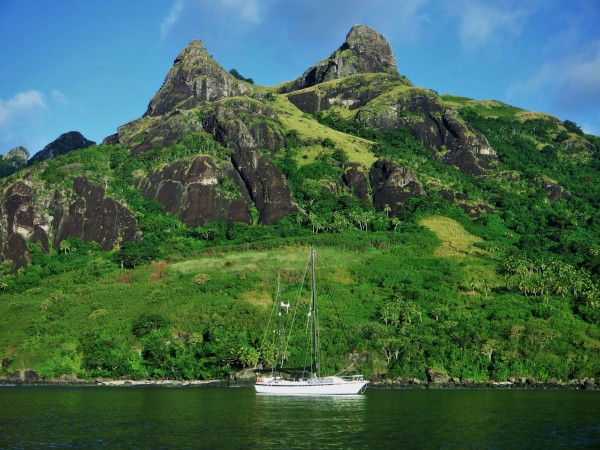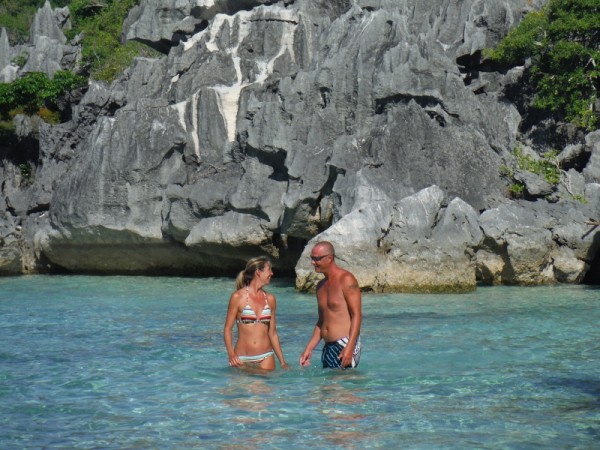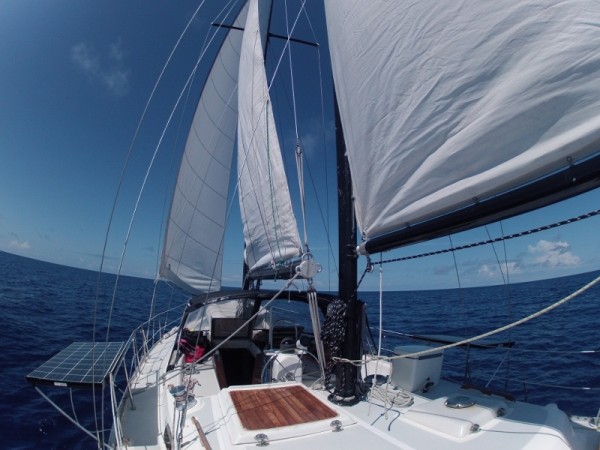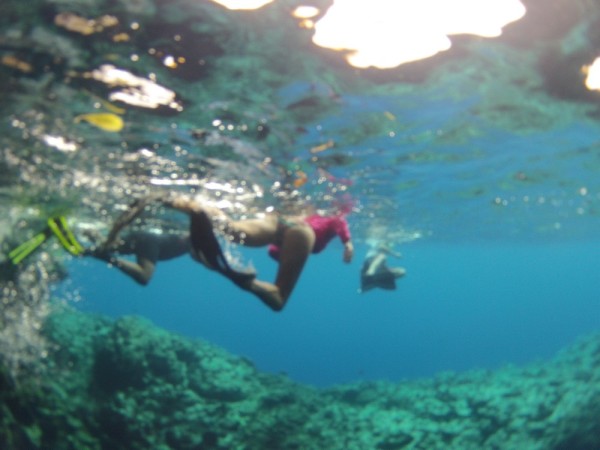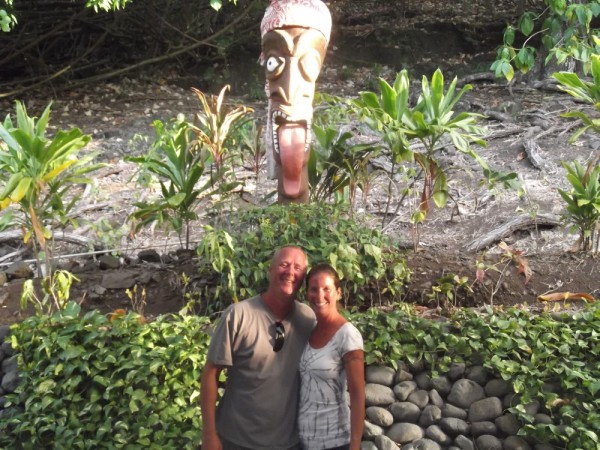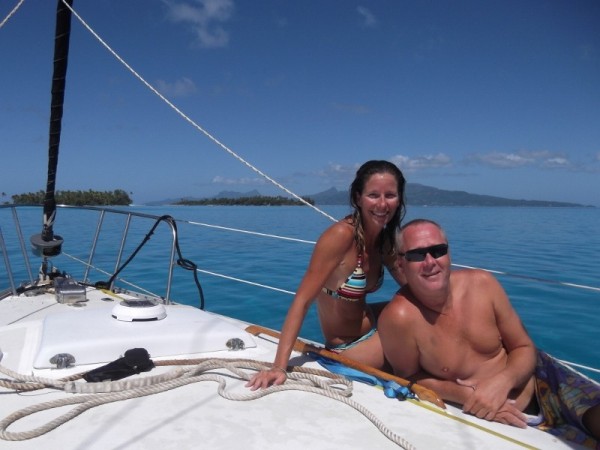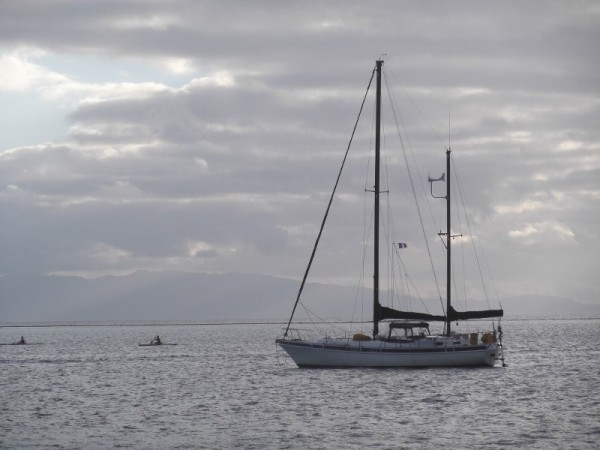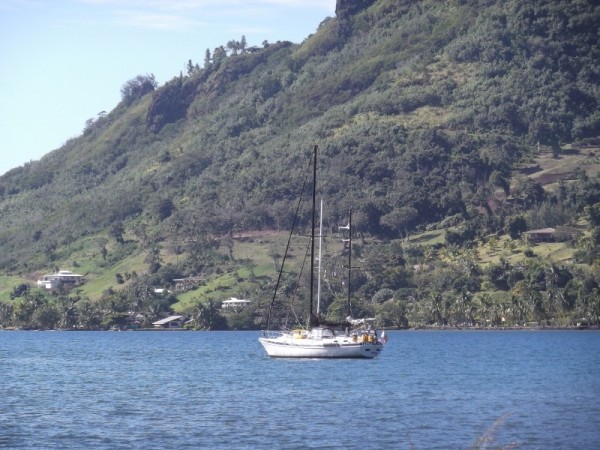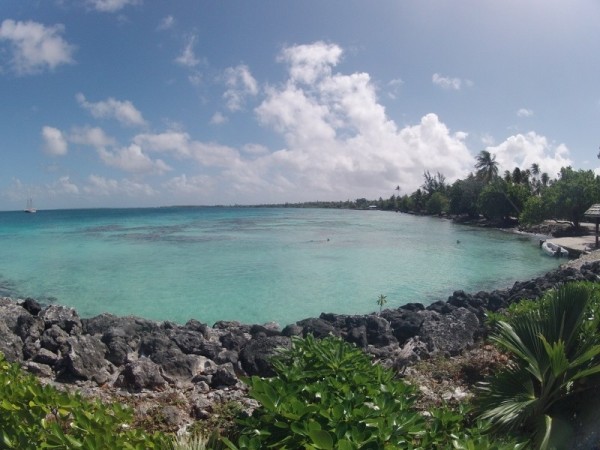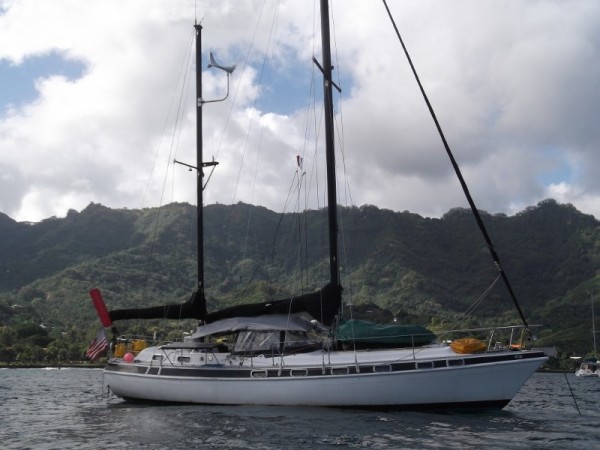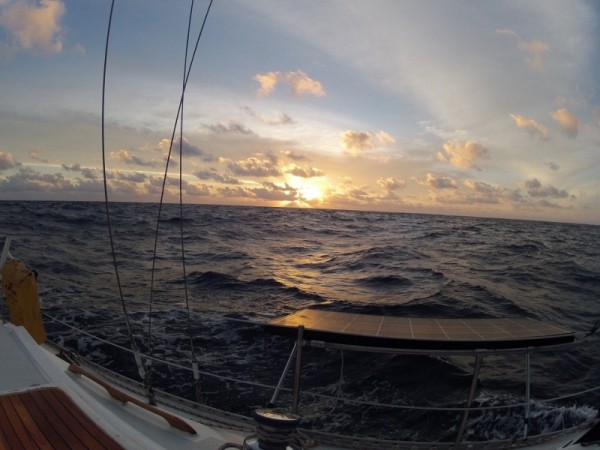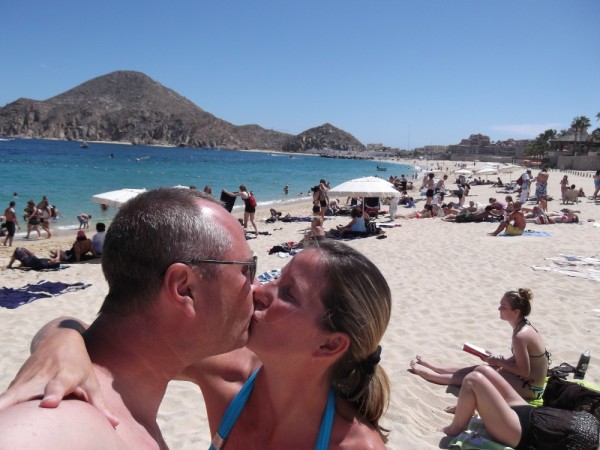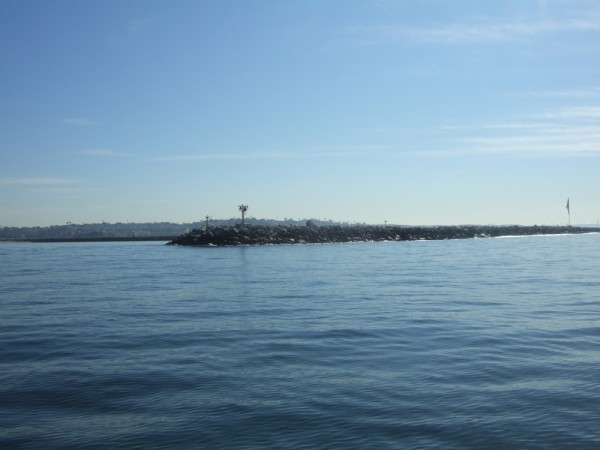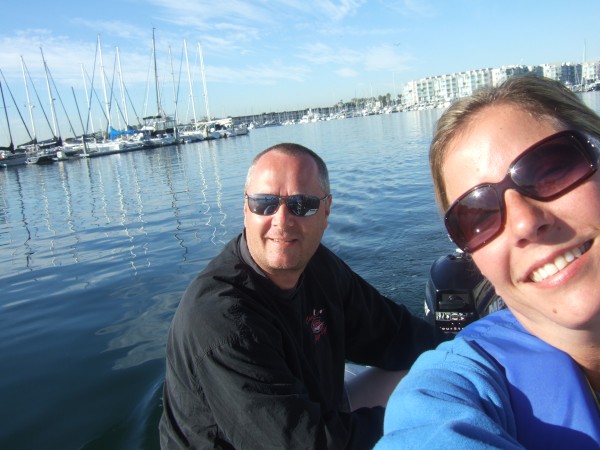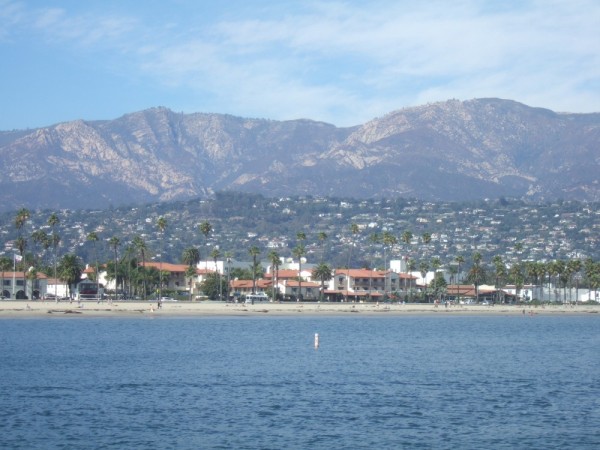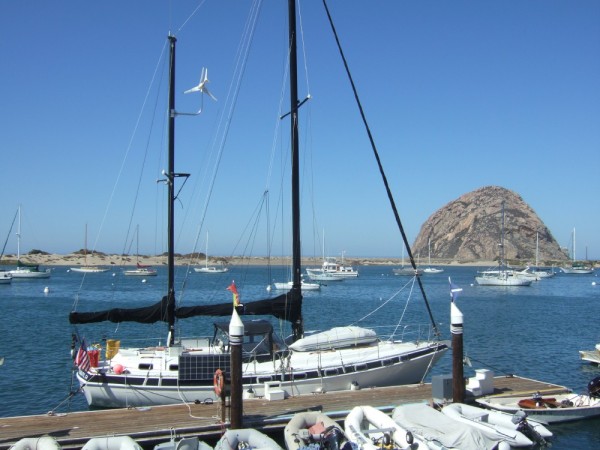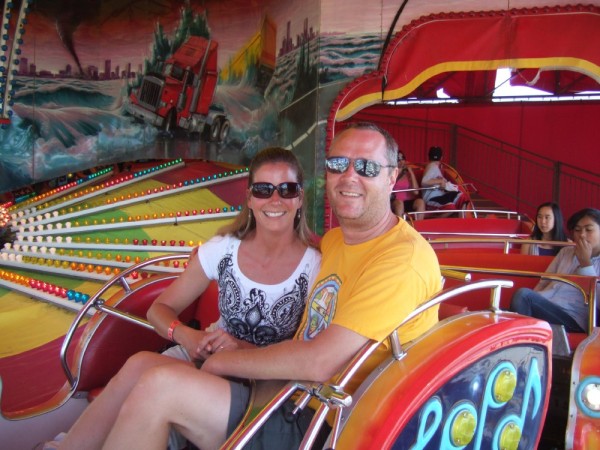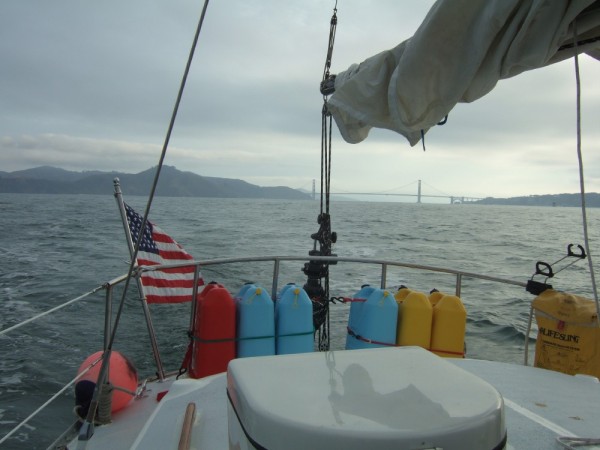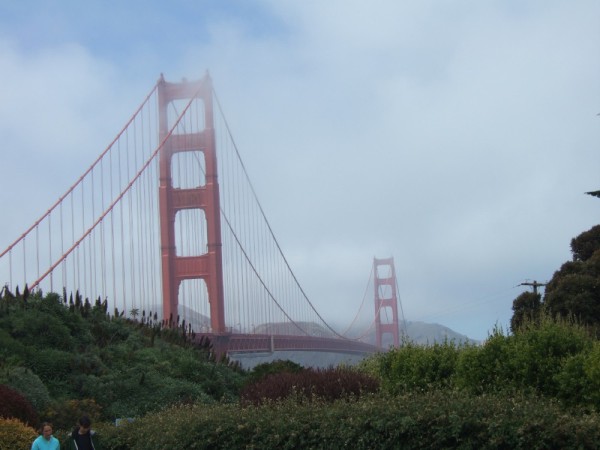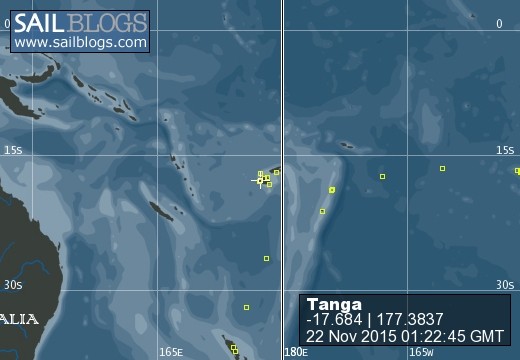
SV Tanga
no experience necessary
21 November 2015 | Vuda Point Marina, Fiji Islands
03 November 2015 | Savu Savu, Fiji
23 October 2015 | Savu Savu, Fiji
29 June 2015 | Musket Cove, Malolo Lai Lai Island, Fiji
12 June 2015 | Musket Cove Marina, Malolo Lai Lai Island, Fiji
19 September 2014 | Musket Cove, Malolo Lai Lai, Fiji
05 September 2014 | Musket Cove, Malolo Lai Lai Island, Fiji
17 August 2014 | Musket Cove, Malolo Lai Lai Island, Fiji
26 July 2014 | Savusavu, Vanua Levu Island, Fiji
06 July 2014 | Nananu-i-ra Island, Viti Levu, Fiji
04 July 2014 | Nananu-i-ra Island, Viti Levu, Fiji
01 July 2014 | 17 23.614S:177 '47.72E
30 June 2014 | Port Denarau Marina, Fiji
25 June 2014 | Musket Cove, Malolo Lai Lai, Fiji
29 May 2014 | Port Denerau Marina, Fiji
21 May 2014 | Malolo Lai Lai Island, Fiji
19 May 2014 | Musket Cove, Malolo Lai Lai, Fiji
23 April 2014 | Musket Cove, Malolo Lai Lai Island, Fiji
08 April 2014 | Port Denarau Marina, Fiji
05 March 2014 | Vuda Marina, Fiji
Vanilla Bean Sex in Tonga
14 November 2012 | Opua, New Zealand
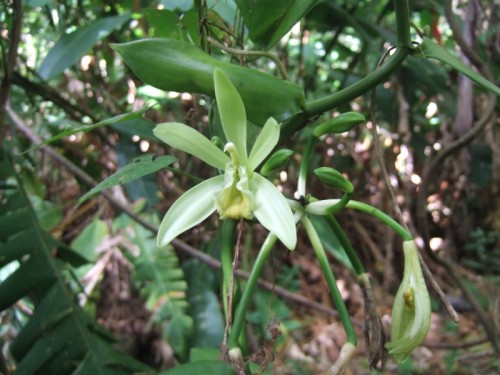
Back in our previous life, the only exposer we had to vanilla flavor was the extract in a bottle variety that was used mainly for baked goods. In Polynesia, vanilla plantations are popular tourist attractions, which we didn't visit, but that is when we learned how expensive a single vanilla bean is. We have also come to learn why they cost so much. Also, any vanilla ice cream in Polynesia and Tonga is so superb, a deliciously rich vanilla flavor rather than the watered down milk vanilla flavor found in the states.
Vanilla beans look very much like a coffee bean and grow on a vine. Each vine has from 1 flower up to several flowers spaced about 3 feet apart from each other. Each flower, after pollination, produces only a single bean. Thus the production is limited to number of flowers that get pollinated. A typical flower plant requiring pollination is left to nature aka, let the bees pollinate for the farmer. In Tonga and Polynesia there is no bee that does this, so each flower must be pollinated by hand. After pollination, the bean grows and then 1 by 1 gets harvested and then put through an elaborate drying process where each bean is turned, again 1 at a time, to dry out.
One night, while at Big Mamas on Pangaimotu Island, we were discussing this with Big Mama and she told us that she has 5000 plants on the island that they maintain for an average annual yield of 3-5 kilos of beans. We expressed an interest in learning the pollinating process and she invited us to the next day's hike into the bush to find and pollinate some vanilla flowers. The flower only opens at dawn for about four hours, so an early hike was called for the next day.
The tools are simple:
• a "spider stick" to remove webs that always seem to be at face level in the jungle
• a toothpick for the sexing/pollinating
• lots of bug spray repellant
At 8am the next day, we head off with Big Mama into the jungle to locate the plants. She has them growing wild in about four locations so finding them is pretty easy. Then she showed us each how to do it. First you grab the "organ" between two fingers and slide the toothpick under the head. Then squeeze the organ onto the toothpick and poof, you have just pollinated one flower. A good worker can do this around 50-70 times an hour, with the biggest challenge being locating and reaching the flower.
We're hoping to add some new pictures in our Tonga gallery will help show some of the vanilla bean sex.
Vanilla beans look very much like a coffee bean and grow on a vine. Each vine has from 1 flower up to several flowers spaced about 3 feet apart from each other. Each flower, after pollination, produces only a single bean. Thus the production is limited to number of flowers that get pollinated. A typical flower plant requiring pollination is left to nature aka, let the bees pollinate for the farmer. In Tonga and Polynesia there is no bee that does this, so each flower must be pollinated by hand. After pollination, the bean grows and then 1 by 1 gets harvested and then put through an elaborate drying process where each bean is turned, again 1 at a time, to dry out.
One night, while at Big Mamas on Pangaimotu Island, we were discussing this with Big Mama and she told us that she has 5000 plants on the island that they maintain for an average annual yield of 3-5 kilos of beans. We expressed an interest in learning the pollinating process and she invited us to the next day's hike into the bush to find and pollinate some vanilla flowers. The flower only opens at dawn for about four hours, so an early hike was called for the next day.
The tools are simple:
• a "spider stick" to remove webs that always seem to be at face level in the jungle
• a toothpick for the sexing/pollinating
• lots of bug spray repellant
At 8am the next day, we head off with Big Mama into the jungle to locate the plants. She has them growing wild in about four locations so finding them is pretty easy. Then she showed us each how to do it. First you grab the "organ" between two fingers and slide the toothpick under the head. Then squeeze the organ onto the toothpick and poof, you have just pollinated one flower. A good worker can do this around 50-70 times an hour, with the biggest challenge being locating and reaching the flower.
We're hoping to add some new pictures in our Tonga gallery will help show some of the vanilla bean sex.
Analysis Paralysis
22 October 2012 | Nukualofa, Tongatapu, Tonga
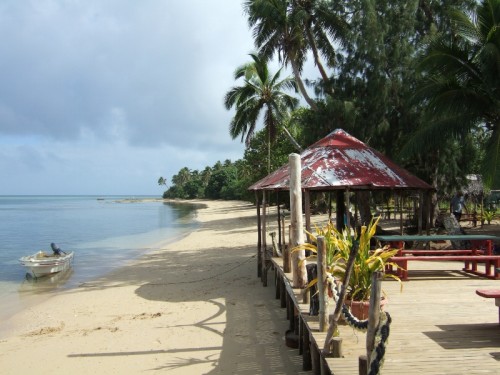
This is the term used to describe the mentality of us cruisers here in Tonga awaiting the PERFECT weather window for the jump to Kiwi land. It comes from the need for us (and the 30 or so other yachties) to analyze and re-analyze and then discuss every night and then re-check and analyze all things weather, looking for that perfect timing to make the run to NZ.
This is the only jump Tom has ever been worried about during our whole trip (not knowing the Bora to Tonga run is typically nasty). Whenever internet is available, he checks and studies the weather coming off Australia and up from the Antarctic Ocean. Then he discusses it with other cruisers, some of which have hired professional weather advisers. The lows from the ice are full gales and very severe with extreme seas. The trend from Oz is alternating highs and lows. When they collide, it makes for an ugly situation, thus all precautions are taken to avoid this. This in turn creates a great level of over analyzing which paralyzes us and keeps us waiting for a perfect weather window that will almost never be there.
We have talked to numerous Kiwis that make the trip annually and they state that the jump is way over rated and not as tough as we have built it up to be. We hope this is the case but none the less we are watching closely.
Currently the window is closed with a trough off Oz and a nasty low below NZ. But then a high moves off Oz and looks like it may park in our path for a while, but this means almost no wind. In no wind we must run the engine to keep moving so we don't get stuck when the next low spins up. So it looks like it may be "feast or famine". For now we are here until at least next week.
In other news; we have filed our clearance paperwork for NZ (they require it at least 48 hrs ahead of arrival). We are preparing to check out of Tonga and fill up the tank with our duty free diesel and a boatload of water for the trip. The past few days have been filled with fishing, snorkeling around a couple shipwrecks, reading, and spending our evenings at Big Mamas Yacht Club.
Big Mamas is a great place. It's not a typical yacht club, it's more of a restaurant/bar, but since you need a yacht to go, she calls it a yacht club. The burgers are great and the beer cheap so it meets all our criteria for a great place. Big Mama herself is a very funny lady to talk with and trade some laughs with. She can also point you, or take care of any of your boat life type needs (water, laundry, water taxi, etc.). Just keep the conversation away from sea cucumber uses and needs (Just kidding Mama!). The place sits on the beach and faces the sunsets that are wonderful. The floor is all sand so we never wear shoes and food DOES taste better with your toes in the sand!
We LOVE Tonga. To future cruisers; the scenery is as good as Polynesia, but the people are way friendlier and everything is much cheaper. To gauge pricing I'll use bar beer prices as an example: In the states a beer will cost $5US, in Mexico $2-3US, in Polynesia $7-14US, and in Tonga its $2-3US. In hindsight we wish we had left more time for Tonga and not so much for Polynesia. We can't wait to see what NZ has in store for us.
This is the only jump Tom has ever been worried about during our whole trip (not knowing the Bora to Tonga run is typically nasty). Whenever internet is available, he checks and studies the weather coming off Australia and up from the Antarctic Ocean. Then he discusses it with other cruisers, some of which have hired professional weather advisers. The lows from the ice are full gales and very severe with extreme seas. The trend from Oz is alternating highs and lows. When they collide, it makes for an ugly situation, thus all precautions are taken to avoid this. This in turn creates a great level of over analyzing which paralyzes us and keeps us waiting for a perfect weather window that will almost never be there.
We have talked to numerous Kiwis that make the trip annually and they state that the jump is way over rated and not as tough as we have built it up to be. We hope this is the case but none the less we are watching closely.
Currently the window is closed with a trough off Oz and a nasty low below NZ. But then a high moves off Oz and looks like it may park in our path for a while, but this means almost no wind. In no wind we must run the engine to keep moving so we don't get stuck when the next low spins up. So it looks like it may be "feast or famine". For now we are here until at least next week.
In other news; we have filed our clearance paperwork for NZ (they require it at least 48 hrs ahead of arrival). We are preparing to check out of Tonga and fill up the tank with our duty free diesel and a boatload of water for the trip. The past few days have been filled with fishing, snorkeling around a couple shipwrecks, reading, and spending our evenings at Big Mamas Yacht Club.
Big Mamas is a great place. It's not a typical yacht club, it's more of a restaurant/bar, but since you need a yacht to go, she calls it a yacht club. The burgers are great and the beer cheap so it meets all our criteria for a great place. Big Mama herself is a very funny lady to talk with and trade some laughs with. She can also point you, or take care of any of your boat life type needs (water, laundry, water taxi, etc.). Just keep the conversation away from sea cucumber uses and needs (Just kidding Mama!). The place sits on the beach and faces the sunsets that are wonderful. The floor is all sand so we never wear shoes and food DOES taste better with your toes in the sand!
We LOVE Tonga. To future cruisers; the scenery is as good as Polynesia, but the people are way friendlier and everything is much cheaper. To gauge pricing I'll use bar beer prices as an example: In the states a beer will cost $5US, in Mexico $2-3US, in Polynesia $7-14US, and in Tonga its $2-3US. In hindsight we wish we had left more time for Tonga and not so much for Polynesia. We can't wait to see what NZ has in store for us.
Nuku’alofa, Tongatapu, Tonga
17 October 2012 | Nuku'alofa, Tongatapu, Tonga
On Tuesday morning, we set our alarm for 5:00am so we could have an early morning departure from Neaifu Harbor in Vavau. We only had a few remaining things to take care of aboard Tanga, and we motored out of the harbor at 6:30am, with blue skies and the warm sun shining on us.
This is what happens when we do not announce to Neptune that we are leaving. Our sail on Tuesday is now considered our best sailing day ever. Tom said this is what sailboats were invented for! I say that this is the type of sailing I always pictured from the sailing brochure aka Toms sales speech he gave me back in the decision times to go sailing around the world. The perfect and wonderful sailing conditions we are talking about are not related to fastest speed or most miles made, it is all about the blue sunny skies, a nice 15 knot wind from the east which allowed us to sail on a beam reach and is Tangas favorite point of sail, and 3-6 foot comfortable seas. It was a very relaxing, peaceful and beautiful sail. And since the conditions were so nice, we decided to sail with all the sails up; main, mizzen and jib. Tanga probably looked very picturesque with all her sails open and full.
When the sun came up on Wednesday, we saw beautiful skies to the north and very rainy grey skies to the south. Unfortunately, we were heading south to the ugly skies. We had on and off rain in the morning and just grey skies all afternoon. When we were weaving our way through the coral reefs while approaching Nukualofa, the rain began again and continued well after we were anchored, had dinner, and relaxed. Nukualofa is on the island of Tongatapu and is the capital of Tonga and the seat of the government, as well as being the location of the Royal Palace. The population is approximately 30,000, by far the largest in the Kingdom. The island looks completely different than the Vavau Islands which had hills, some small mountains and cliffs. Tongatapu is a very flat coralline island, like an atoll. If you use the Google map, you will see that we are anchored off an island called Pangaimotu, which is just across from Nukualofa. Pangaimotu is lined with golden sand beaches, with a beach side restaurant, and there is a coral reef very near to us so we plan on doing a lot of swimming, snorkeling and fishing while we are here. This is our last stop in Tonga and is our jumping point to head to New Zealand. From this point on, we will be watching, analyzing, and studying the weather, waiting for a weather window to head to New Zealand. But for the meantime, we still on island time mon!
Trip stats: Total distance: 176 miles Average speed: 5.2 knots Fastest speed: 9.2 knots Trip length: 34 hours
Posted via satellite phone
This is what happens when we do not announce to Neptune that we are leaving. Our sail on Tuesday is now considered our best sailing day ever. Tom said this is what sailboats were invented for! I say that this is the type of sailing I always pictured from the sailing brochure aka Toms sales speech he gave me back in the decision times to go sailing around the world. The perfect and wonderful sailing conditions we are talking about are not related to fastest speed or most miles made, it is all about the blue sunny skies, a nice 15 knot wind from the east which allowed us to sail on a beam reach and is Tangas favorite point of sail, and 3-6 foot comfortable seas. It was a very relaxing, peaceful and beautiful sail. And since the conditions were so nice, we decided to sail with all the sails up; main, mizzen and jib. Tanga probably looked very picturesque with all her sails open and full.
When the sun came up on Wednesday, we saw beautiful skies to the north and very rainy grey skies to the south. Unfortunately, we were heading south to the ugly skies. We had on and off rain in the morning and just grey skies all afternoon. When we were weaving our way through the coral reefs while approaching Nukualofa, the rain began again and continued well after we were anchored, had dinner, and relaxed. Nukualofa is on the island of Tongatapu and is the capital of Tonga and the seat of the government, as well as being the location of the Royal Palace. The population is approximately 30,000, by far the largest in the Kingdom. The island looks completely different than the Vavau Islands which had hills, some small mountains and cliffs. Tongatapu is a very flat coralline island, like an atoll. If you use the Google map, you will see that we are anchored off an island called Pangaimotu, which is just across from Nukualofa. Pangaimotu is lined with golden sand beaches, with a beach side restaurant, and there is a coral reef very near to us so we plan on doing a lot of swimming, snorkeling and fishing while we are here. This is our last stop in Tonga and is our jumping point to head to New Zealand. From this point on, we will be watching, analyzing, and studying the weather, waiting for a weather window to head to New Zealand. But for the meantime, we still on island time mon!
Trip stats: Total distance: 176 miles Average speed: 5.2 knots Fastest speed: 9.2 knots Trip length: 34 hours
Posted via satellite phone
Something about nothing
11 October 2012 | Neiafu Harbor, Vavau, Tonga
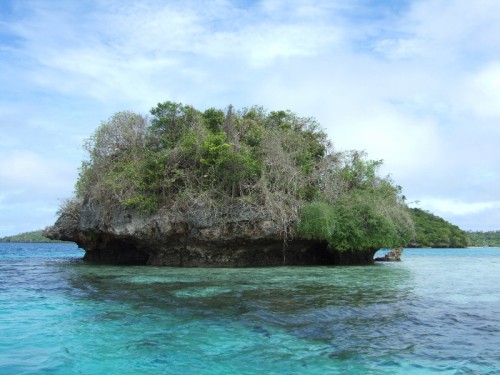
We're back in civilization again, enjoying internet, good food and all the Tongan amenties available. We really haven't been up to much lately, just hanging out in town or on the boat. We have continued our dinghy fishing adventures, while in the harbor. Last evening, we had several bites but not one of those suckers got hooked; unfortunately, we were left with having macaroni and cheese for dinner. Again, this morning, we jumped into the dinghy for another fishing adventure. We didn't have as many bites as the previous night, however we did catch a fish that was thin and long, around 3 feet long with big teeth. Because of his thiness, we released him back into the water. When we got back on Tanga, we looked the fish up in our book, and discovered we had caught a Snook Fish, belonging to the barracuda family and it said that the fish has canine teeth that will leave a nasty bite. We can definately attest to the size of the teeth.
One thing I forgot to mention in our last post was that we felt and experienced our very first earthquake on the boat. We were anchored off of Vaka Litu, near the Coral Gardens when we felt it. We were both lounging in the cabin area, reading our books when all of a sudden, we felt a rumble feeling come up from below us. We didn't feel it from the sides of the boat; the vibration came from under us. It lasted about 5 seconds. We both looked at each other and said, "was that an earthquake?" We immediately turned on our VHF radio and everyone was reporting that they felt the earthquake also. We later found out, that it was a 4.8 earthquake centered about 50 miles away from where we were located. Since then, 2 other earthquakes have happened, but they have been centered about 100+ miles away and we haven't felt them.
We also wanted to let everyone know that we have posted more pictures in the Tonga Gallery. Check them out when you get a chance. One last thing we wanted to mention, for some reason we are not able to access our private messages that are sent through our website. So, if you want to send us something private, you can email us or you can make a comment and ask that we keep it private. We have to verify all the comments before we approve them to be seen on the website, so if you want it private, we will do so.
One thing I forgot to mention in our last post was that we felt and experienced our very first earthquake on the boat. We were anchored off of Vaka Litu, near the Coral Gardens when we felt it. We were both lounging in the cabin area, reading our books when all of a sudden, we felt a rumble feeling come up from below us. We didn't feel it from the sides of the boat; the vibration came from under us. It lasted about 5 seconds. We both looked at each other and said, "was that an earthquake?" We immediately turned on our VHF radio and everyone was reporting that they felt the earthquake also. We later found out, that it was a 4.8 earthquake centered about 50 miles away from where we were located. Since then, 2 other earthquakes have happened, but they have been centered about 100+ miles away and we haven't felt them.
We also wanted to let everyone know that we have posted more pictures in the Tonga Gallery. Check them out when you get a chance. One last thing we wanted to mention, for some reason we are not able to access our private messages that are sent through our website. So, if you want to send us something private, you can email us or you can make a comment and ask that we keep it private. We have to verify all the comments before we approve them to be seen on the website, so if you want it private, we will do so.
Vaka’ Litu Island
07 October 2012 | Vaka' Litu Island, Vavau Group, Tonga
Weve been here, anchored off of an uninhabited island, Vaka Litu for a week now. The anchorage is protected from wind waves, swells and a bit of the wind. We have been enjoying very calm nights of sleep with very little movement. We are surrounded by island walls, a few golden sand beaches, the Coral Gardens, and about 5 other little islands, all within a dinghy ride away.
Our first few days here, we had the all day rains, with brief periods of no rain. One afternoon, when we were the only boat anchored here and the rain had stopped, we ventured to the beach and walked around for a while. Shortly afterwards, another boat entered the bay and anchored. I only mention this because as we were dinghying back to Tanga, we look over, and the guy is stark naked, standing at the bow of the boat, washing himself!! The next day, (still raining nonstop) while I was making breakfast, we hear someone singing. I pop my head out of the companion way and see our naked guy neighbor, standing in the cockpit (clothed), singing The sun will come out tomorrow, waving his arms and giving it his all. He actually sounded good and it gave us a giggle. Later that day, when the rain stopped, he came by and introduced himself. Tom and Danielle, from Jackson Hole Wyoming, are spending their honeymoon sailing around Tonga. The other Tom said that his singing was his way of asking the rain gods to stop. We decided to invite them over for dinner that night and help celebrate their honeymoon. Once the evening approached, Tom decided to go hunt and gather, aka, fish for some dinner. caught 2 Coral Cods which I fried up as an appetizer; the fish werent that meaty but very tasty. We had a great time with Danielle and Tom, and we waved good bye to them the following day.
The rest of our days here have been less rainy, more sunshine and weve been able to enjoy the great snorkeling at Coral Gardens and beach time for me. The last time we snorkeled Coral Gardens, we were on the other side of the surf, meaning the good side of the coral. Being inside the bay now, we had to swim over shallow water with coral heads, watch that we dont get to close to the coral and get scraped, and through the swell and breaking waves, to get over to the beautiful area of the Coral Gardens. Once over, the view is just beautiful. The coral area is quite large, with lots of different colored coral and plenty of reef fish. The farther out you go, the more the shelf drops off to deep water. We kept our eyes out for pelagic fish, but never did see any.
We also have been enjoying fishing every day. We often trail a line in the water and dingy around the different islands and we now know the hot spots for getting bites. Also, if I call for a beach day, Tom will bring along his rod and fish while I soak up the sun. We found this wonderful secluded beach that is tiny but perfect for two people. We have seen 3 baby black tip reef sharks here and Tom caught a Trevally and a Coral Cod at this tiny beach area. Another time, when we were dinghying around and I had the line in the water, I caught my very first fish, a barracuda!! He was about 16 inches long with ½ inch long teeth. We let him go because barracudas are known to be very bony. Today, since it was cloudy and we werent in the mood to swim, we decided to go fishing again. In the dinghy and line in water, I had another fish on the hook. This one fought pretty hard with me, to the point I handed the rod over to Tom. Unfortunately, the line broke and the fish was gone. Urg!!! I really wanted to know what was putting on such a good fight and has made my upper arm and shoulder achy!
Saturday night, we experienced a true Tongan Feast on the island of Lape. Every Saturday evening, this tiny village hosts a feast at no charge, they only ask for a donation. When we arrived, by our dinghy, we were immediately greeted by Cleo and given flower leis. Cleo told us about his village; population 32, 16 adults and 16 children. Also 3 visiting adults consisting of 2 teachers and a minister. We walked the village which was really about 5 houses, a church and school. He also stated that all the houses are getting flushing toilets and solar panels, all by the donations from the feasts that are held. The feast itself, is definitely a community event, everyone in the village participates and contributes. It began with the entire village singing, very harmonic with no instruments, followed by a prayer. Wasting no time, the feast began. The food consisted of a roasted pig, deep fried fish, several different types of salads and drinking coconut water straight from a coconut. This particular Saturday evening feast was the most people the island has ever had at their feast with 94 people attending. They had plenty of food for everyone and a few people had second helpings (the food was very good).
Our time is winding down here at Vaka Litu Island. We will be heading to another anchorage off of Pangaimotu island within the next day or two and then back to the main town of Neifu to run some errands.
Posted via satellite phone
Our first few days here, we had the all day rains, with brief periods of no rain. One afternoon, when we were the only boat anchored here and the rain had stopped, we ventured to the beach and walked around for a while. Shortly afterwards, another boat entered the bay and anchored. I only mention this because as we were dinghying back to Tanga, we look over, and the guy is stark naked, standing at the bow of the boat, washing himself!! The next day, (still raining nonstop) while I was making breakfast, we hear someone singing. I pop my head out of the companion way and see our naked guy neighbor, standing in the cockpit (clothed), singing The sun will come out tomorrow, waving his arms and giving it his all. He actually sounded good and it gave us a giggle. Later that day, when the rain stopped, he came by and introduced himself. Tom and Danielle, from Jackson Hole Wyoming, are spending their honeymoon sailing around Tonga. The other Tom said that his singing was his way of asking the rain gods to stop. We decided to invite them over for dinner that night and help celebrate their honeymoon. Once the evening approached, Tom decided to go hunt and gather, aka, fish for some dinner. caught 2 Coral Cods which I fried up as an appetizer; the fish werent that meaty but very tasty. We had a great time with Danielle and Tom, and we waved good bye to them the following day.
The rest of our days here have been less rainy, more sunshine and weve been able to enjoy the great snorkeling at Coral Gardens and beach time for me. The last time we snorkeled Coral Gardens, we were on the other side of the surf, meaning the good side of the coral. Being inside the bay now, we had to swim over shallow water with coral heads, watch that we dont get to close to the coral and get scraped, and through the swell and breaking waves, to get over to the beautiful area of the Coral Gardens. Once over, the view is just beautiful. The coral area is quite large, with lots of different colored coral and plenty of reef fish. The farther out you go, the more the shelf drops off to deep water. We kept our eyes out for pelagic fish, but never did see any.
We also have been enjoying fishing every day. We often trail a line in the water and dingy around the different islands and we now know the hot spots for getting bites. Also, if I call for a beach day, Tom will bring along his rod and fish while I soak up the sun. We found this wonderful secluded beach that is tiny but perfect for two people. We have seen 3 baby black tip reef sharks here and Tom caught a Trevally and a Coral Cod at this tiny beach area. Another time, when we were dinghying around and I had the line in the water, I caught my very first fish, a barracuda!! He was about 16 inches long with ½ inch long teeth. We let him go because barracudas are known to be very bony. Today, since it was cloudy and we werent in the mood to swim, we decided to go fishing again. In the dinghy and line in water, I had another fish on the hook. This one fought pretty hard with me, to the point I handed the rod over to Tom. Unfortunately, the line broke and the fish was gone. Urg!!! I really wanted to know what was putting on such a good fight and has made my upper arm and shoulder achy!
Saturday night, we experienced a true Tongan Feast on the island of Lape. Every Saturday evening, this tiny village hosts a feast at no charge, they only ask for a donation. When we arrived, by our dinghy, we were immediately greeted by Cleo and given flower leis. Cleo told us about his village; population 32, 16 adults and 16 children. Also 3 visiting adults consisting of 2 teachers and a minister. We walked the village which was really about 5 houses, a church and school. He also stated that all the houses are getting flushing toilets and solar panels, all by the donations from the feasts that are held. The feast itself, is definitely a community event, everyone in the village participates and contributes. It began with the entire village singing, very harmonic with no instruments, followed by a prayer. Wasting no time, the feast began. The food consisted of a roasted pig, deep fried fish, several different types of salads and drinking coconut water straight from a coconut. This particular Saturday evening feast was the most people the island has ever had at their feast with 94 people attending. They had plenty of food for everyone and a few people had second helpings (the food was very good).
Our time is winding down here at Vaka Litu Island. We will be heading to another anchorage off of Pangaimotu island within the next day or two and then back to the main town of Neifu to run some errands.
Posted via satellite phone
| Vessel Name: | Tanga |
| Vessel Make/Model: | Morgan OutIsland 415 |
| Hailing Port: | San Francisco, CA |
| Crew: | Tom and Monica |
| About: | Hi and welcome to our website. We are beginning our new journey in life of sailing around the world. Please follow along with us in our new adventures. |
| Home Page: | http://www.tangaway.com |
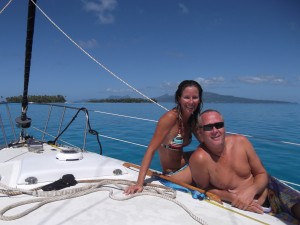
Who: Tom and Monica
Port: San Francisco, CA
